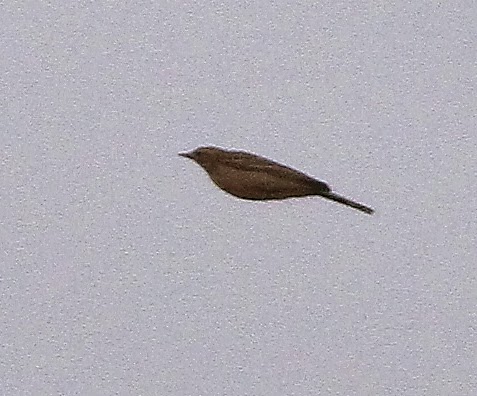The last day of 2014 ended brilliantly with a finding a Green-winged Teal on the patch. But it wasn't too bad before that. I started at South Haven, on the South side of the Poole Harbour mouth, hoping to relocate a Black Guillemot that local patch Birder, Graham Armstrong, had found earlier than morning. I wasn't surprised about not seeing it as the tide was racing out of the harbour & it would have quickly been swept out of the harbour mouth. I could see the 3 local Purple Sandpipers feeding just above the water's edge in front of the Haven Hotel, on the Sandbanks side of the harbour mouth. So I caught the ferry & within a few minutes I was watching them at close range. They were totally unfazed by me being only a few metres from them. Although they had been getting flushed by less considerate members of the general public & their dogs earlier on. It gave me some good opportunities to have a play with the SX60. All photos apart from the first photo are with the SX60.
Purple Sandpiper: An initial photo with the Canon 7D & 400mm lens. After that I switched to the SX60 as I got closer
Purple Sandpiper: I should be able to get better photos, so clearly I need to learn how to set up the SX60 better than the settings I've been using so far
Purple Sandpiper
Clements believe there is only the nominate race of Purple Sandpiper. But I think there is clear evidence that there are two subspecies involved, although only one race reaches the UK. This is the soft subspecies (which migrates South), whereas the hard subspecies stays up near the Arctic circle over the Winter - see Tormod's great Post of the hard subspecies.
Moving onto Brands Bay, I was pleased to see a couple of Spoonbills feeding in the bay. Despite Spoonbills being resident now in Poole Harbour and Brownsea not more than about a mile from the bay, then Spoonbills are a scarce species in the bay. One or two will appear for a day or a few days and that will be it for the rest of the year. Even better, one was close to the hide.
Spoonbill: First Winter with the black wing tips just showing in the closed wing, but they were very obvious in flight
Avocets are a more regular Winter visitor to Brands Bay, but are still absent on most visits. Again surprising given there are well over 1000 wintering in Poole Harbour. Generally a flock of more than ten is unusual & I've only exceeded 35 once, when I had a flock of 158 on 26 Oct 14. I can only assume there was a lot of disturbance at their regular feeding areas to get a flock of that size in Brands Bay.
Avocet
































































